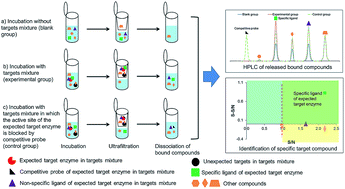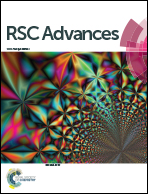An in vitro affinity-based method for studying herb–drug interactions for direct identification of cytochrome P450 1A2, 3A4, and 2C9 specific ligands from herbal extracts using ultrafiltration-high performance liquid chromatography†‡
Abstract
A novel in vitro strategy for affinity-based ultrafiltration-high performance liquid chromatography (HPLC) was developed for the direct identification of cytochrome P450 (CYP) 1A2, 3A4, and 2C9 specific ligands from Danshen extracts, in which human liver microsome (HLM) was used as the source of CYP enzymes. The Danshen extract was incubated without HLM, with HLM, or with HLM where the active site of the target enzyme was blocked with a specific competitive probe before ultrafiltration to isolate ligand–enzyme complexes from unbound compounds. Subsequently, HPLC analysis was performed on the released ligands from the complexes. α-Naphthoflavone, ketoconazole, and sulfaphenazole were used as specific competitive probes for CYP1A2, 3A4, and 2C9, respectively. The signal-to-noise ratio (S/N) and specific-signal-to-noise ratio (S-S/N) of each compound were calculated using the obtained peak areas. Finally, two criteria were applied to select putative ligands for each specific target: (1) S/N > 1; (2) S-S/N > 0. Finally, dihydrotanshinone was identified as a specific ligand for CYP1A2 and tanshinone I, cryptotanshinone, and tanshinone IIA were identified as specific ligands for CYP1A2, 2C9, and 3A4. It was demonstrated that the newly developed method can be used to rapidly and directly detect specific ligands from natural product extracts in multi-target systems.



 Please wait while we load your content...
Please wait while we load your content...